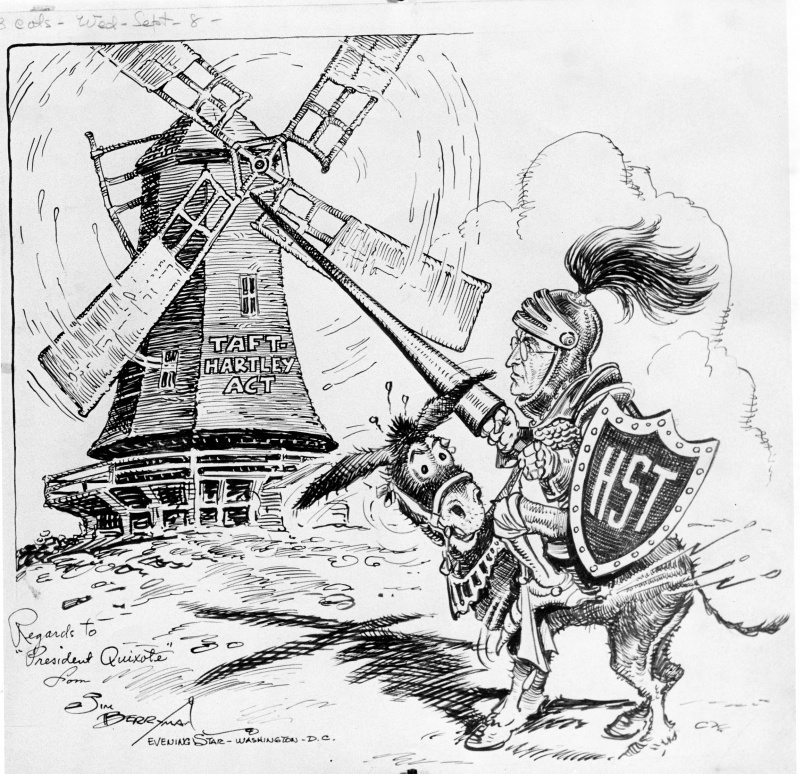Taft-Hartley Act of 1947

The Taft-Hartley Act’s was passed into law on June 23, 1947 by a congressional approval overriding President Truman’s veto. The Taft-Hartley Act prohibited direct contributions by labor unions (and corporations) to federal candidates. Section 304 of the Act amended the Federal Corrupt Practices Act of 1925, making it illegal for labor organizations to use their funds for contributions in federal elections. This restriction extended to financial contributions, gifts, or other resources aimed at influencing federal elections. This prohibition reflected concerns among conservatives and business interests about the growing political power of labor unions, particularly their ability to pool members’ dues for political purposes. Lawmakers argued that these contributions could create undue influence on candidates and elections. While it limited the direct financial influence of unions, it also prompted unions to innovate and adapt their strategies to remain politically active within the constraints of the law.
The restriction on direct union contributions led to the creation of PACs as an alternative way for unions to engage in campaign financing. Through PACs, unions could legally collect voluntary contributions from their members for political purposes, separate from union dues. For example, the CIO-PAC (Congress of Industrial Organizations Political Action Committee), which had been formed in 1943, became a model for how unions could operate within the legal framework established by the Taft-Hartley Act. These PACs became an essential mechanism for unions to fundraise and support candidates who aligned with their policy priorities, without violating the restrictions on direct contributions.
The Taft-Hartley Act imposed disclosure requirements on labor unions to ensure transparency in their financial activities, including political expenditures. Unions were required to report their finances annually, detailing how their funds were used. These requirements aimed to provide greater accountability and ensure that union funds were not improperly used for political purposes. While the Act targeted unions, its emphasis on disclosure set a precedent for broader campaign finance transparency efforts that would be expanded in later legislation.
The Act restricted unions from engaging in certain political activities beyond campaign financing. Unions were prohibited from using their general treasury funds for political expenditures in federal elections. This included activities such as funding advertisements that expressly advocated for or against a federal candidate. The Act also aimed to protect union members who might disagree with the union’s political stance, ensuring that members were not forced to fund political activities through their dues.
The Taft-Hartley Act laid the groundwork for future campaign finance regulations, such as the Federal Election Campaign Act (FECA) of 1971 and the subsequent creation of the Federal Election Commission (FEC). These laws built on the principles of transparency and restrictions on corporate and union contributions introduced by Taft-Hartley.
The restrictions helped strengthen the position of business interests in campaign financing, as corporations also began forming PACs and exploring other legal avenues to influence elections.
